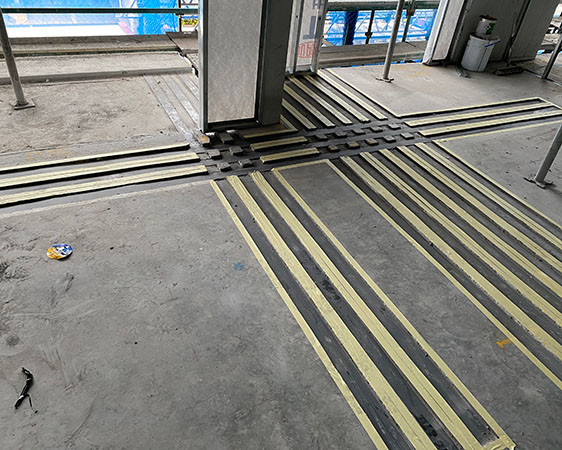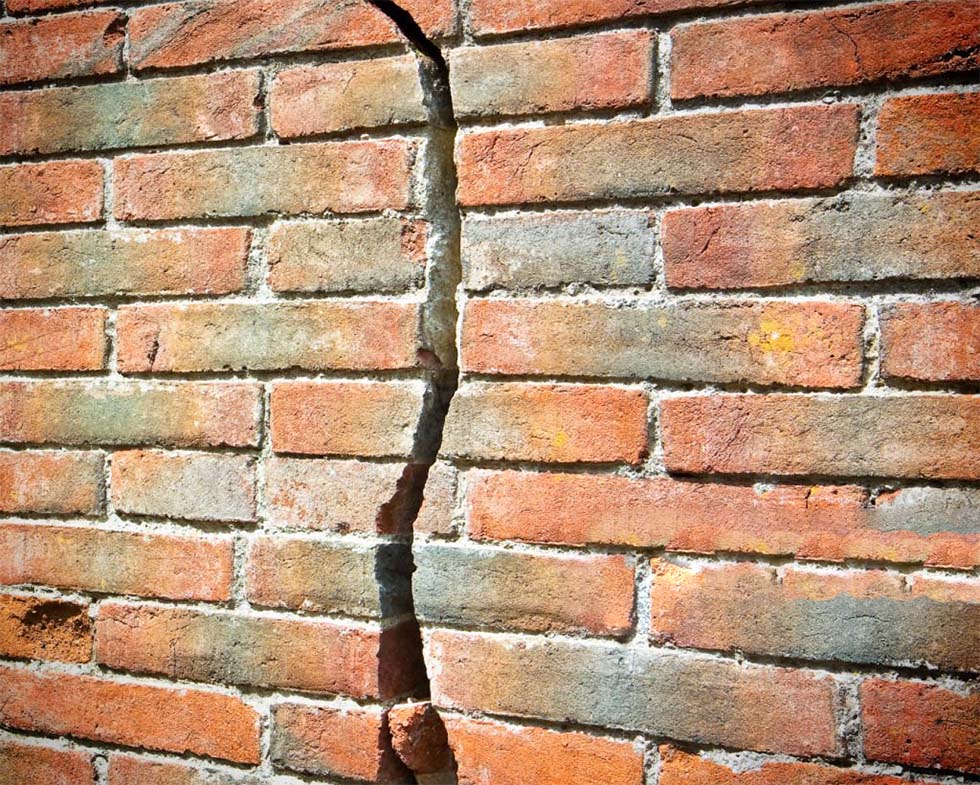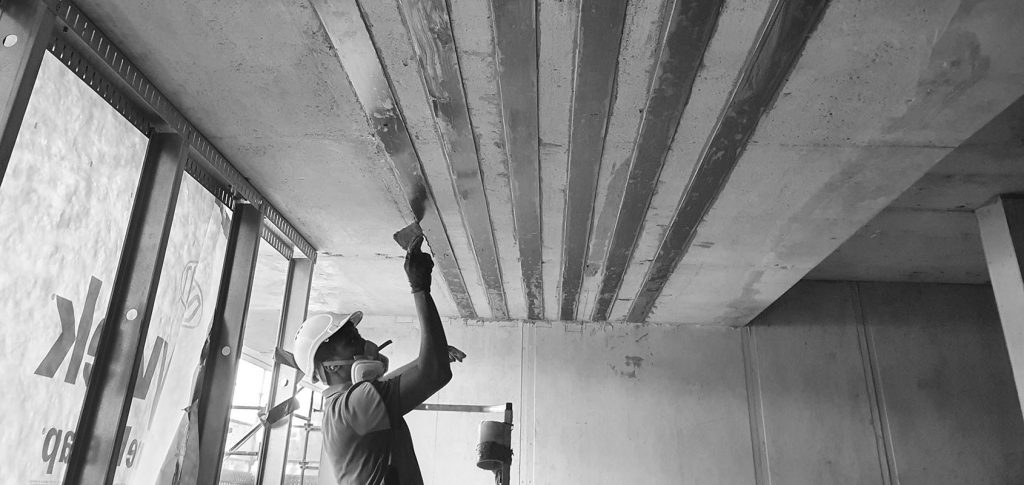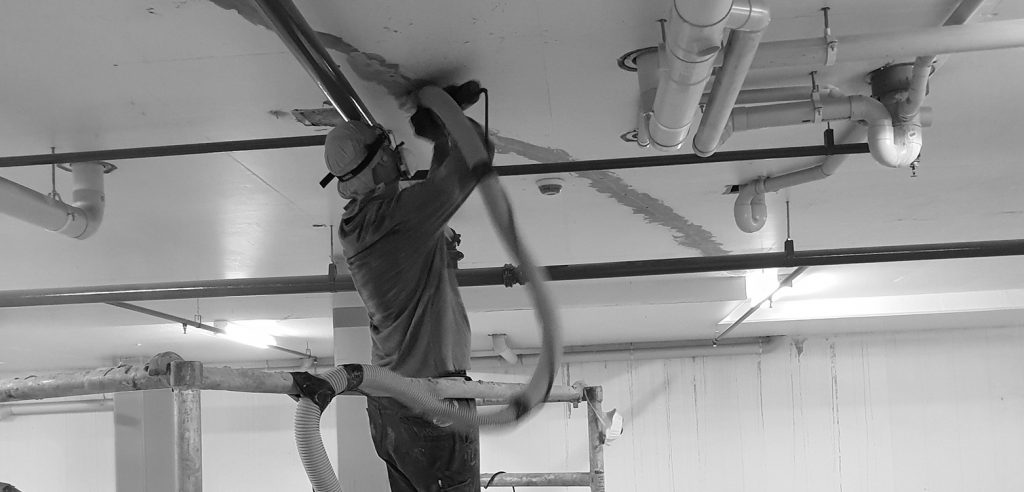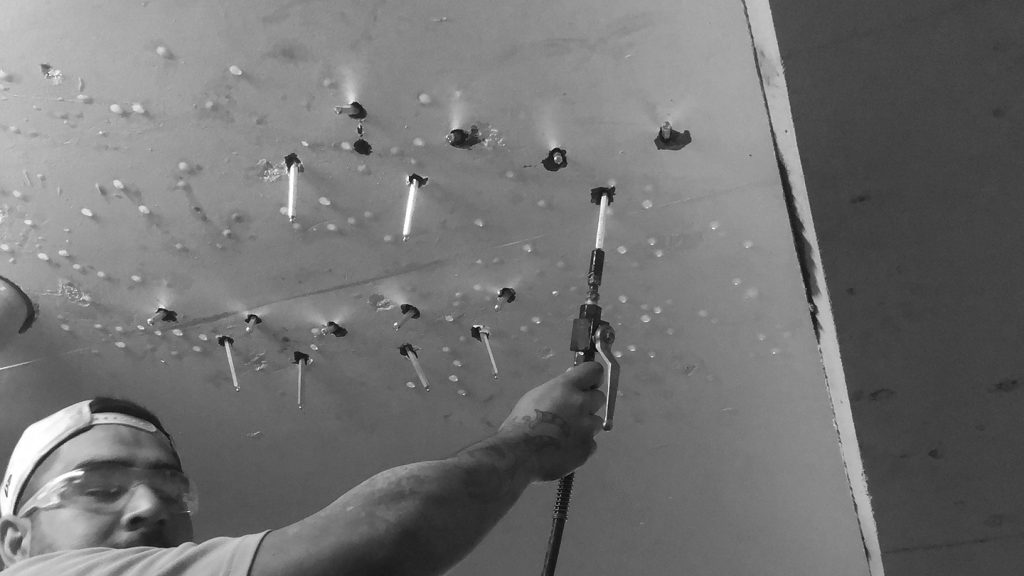Joints are placed in concrete pavement to accommodate slab movement and to prevent natural cracking. The theory is that cracking will follow along the joints if they are correctly positioned.
The first concrete pavement slabs had no real design and no crack control joints or dowels and no steel reinforcement.
In the first part of the 1900s Joint Reinforced Concrete Pavement appeared containing steel reinforcement mesh to hold cracking tightly. Then followed Jointed Plain Concrete Pavement using contraction joints to control cracking with no reinforcement steel and dowel bars were introduced to transverse joints to assist in load transfer in 1917. In 1923 Continuous Reinforced Concrete Pavement was introduced whereby transverse cracks are allowed to form but are held tightly together with continuous reinforcing steel.
Joint Spacing
Joint spacing is very important in crack control as cracks can form naturally during the curing process without suitable control joints in place.
The formula for maximum joint spacing is the relationship between:
- The radius of relative stiffness (mm),
- the modulus of elasticity of concrete (Mpa)
- the slab thickness (mm),
- the modulus of subgrade reaction (Mpa/m),
- Poisson’s ratio for concrete, usually 0.15.
Saw Cutting
There is a short window of opportunity for saw-cutting joints in slabs. Too early and you get ravelling of the joint and the faces are torn and damaged. Too late and the internal stresses causing cracking have already started randomly in the slab.
The saw cut depth and timing is critical for joint formation.
Types of Joints
There are several types of joints which can be transverse or longitudinal in direction:
- Contraction Joints
- Construction Joints
- Isolation Joints
- Expansion Joints
All are designed to induce or control cracking.
Joint Sealants
Joint Sealants are used to minimise infiltration of surface water and incompressible material into the joint. Unsealed joints can allow sub-soil washout and voids to form and uneven subsidence of slabs resulting in differing RLs and rough transitions across joints.
Dowel Bars
Dowel Bars are used to control the joints and their alignment and spacing is critical. If dowels are misaligned and both ends of the dowels are locked in the slab concrete failure and cracking will result. The absence of dowels may cause the transitions across joints to become uneven when the adjoining slab moves out of level or concrete curling occurs.
Dowel racks are an excellent innovation as they ensure that the dowels are aligned correctly and held in place during the concrete pour.
Sub-base
The sub-base material must be compactible and pumping of water through the sub-base through un-doweled joints needs to be eliminated.
Curing
Proper curing practices delay the development of these internal stresses, controls internal temperature, delays moisture evaporation, and fosters the development of increased strength.
Curing therefore controls the evaporation of moisture during the concrete setting process and helps to prevent premature drying of the surface which can prevent or delay the evaporation of the remaining moisture below resulting in an uneven set and issues with strength and surface dusting.
Steel Reinforcement
The correct placement of steel reinforcement bars and mesh is critical to provide strength, reduce width and frequency of cracking and hold slabs together whilst setting and under load.
Typical Jointing Problems
- Concrete sawing too early causing ravelling or spalling
- Concrete sawing too late causing early-age cracking
- Concrete cracking due to insufficient joint depth
- Concrete cracking due to excessive joint spacing
- Concrete cracking due to excessive unrestrained warping
- Concrete cracking due to too much edge restraint
- Concrete cracking due to excessive slab to sub-base bonding
- Concrete cracking due to misalignment of dowel bars
- Concrete cracking due to lack of consideration of weather conditions
- Sealant not adhering to joint faces
- Sealant pulls out during operation
- Sealant gelling
- Sealant cracking or debonding
- Voids of bubbles in sealant
- Water pumping into sub-base
- Sub-base washout
- Concrete slab moving out of level
The Solution
FCS Concrete Repairs are fully resourced to Inspect, Test, Diagnose and make informed recommendations on the best permanent and cost effective methods to rectify any concrete cracking and maintenance issues. Joint repair and reinstatement is our forte!



